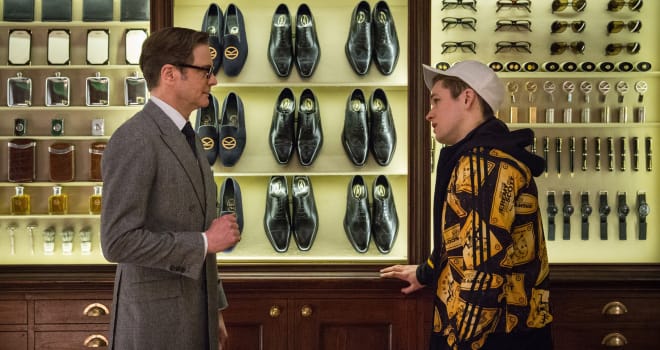Jupiter Ascending: Mila Kunis Is a Queen, Channing Tatum Has Cool Boots
You have to hand it to Andy and Lana Wachowski: They don’t do things halfway. The Matrix was a heroic work of maniacal vision, but even their lesser movies, like the vibrantly colorful Speed Racer and the cockamamie, sporadically delightful Cloud Atlas (which they co-directed with Tom Tykwer) felt like products of artistic aspiration rather than dutiful commercialism. Now they return with Jupiter Ascending, a grandiloquent space opera that attempts to fuse the galaxy-trotting mythology of Star Wars with the familial treachery of Shakespeare. It is a labor of love, with emphasis on the labor. Like all of the Wachowskis’ films (with the exception of their first feature, the taut, terrific crime thriller Bound), this one strains for greatness; unlike their early catalog, it is ultimately weighed down by its own leaden seriousness. An enormously ambitious undertaking, Jupiter Ascending glistens with flop sweat, and you can sense the frantic desperation of its creators. It’s a valiant effort, which is another way of calling it a noble failure.
Not a typical one, though. There is far too much visual splendor and painstaking world-building on display here to dismiss Jupiter Ascending as yet another trifling, noisy, wannabe franchise-starter. After a ludicrous prologue set in Russia, we begin on a faraway planet, where Kalique and Titus Abrasax (Tuppence Middleton and Douglas Booth), two royal siblings dressed in finery, talk idly about the colonization of distant worlds. They are interrupted by their elder brother, Balem (a campy, scenery-munching Eddie Redmayne), who appears suddenly by stepping through a shimmering void in the air. The three speak in the thin politeness that masks bitter jealousy, and their social hierarchy is made clear when Titus casually asks Balem if he might consider parting with one of his more valuable properties. “What’s it called? Earth?” Read More





 And at long last, we come to the two best movies of 2014. If you missed the Manifesto’s previous installments in this series, you can find them at the links below:
And at long last, we come to the two best movies of 2014. If you missed the Manifesto’s previous installments in this series, you can find them at the links below: